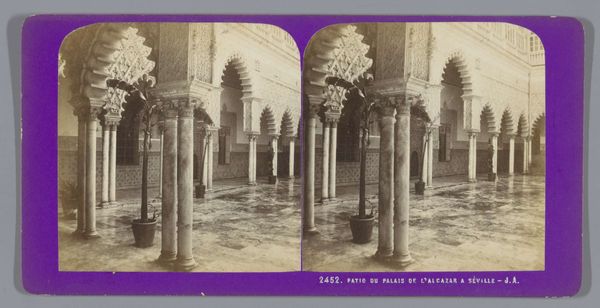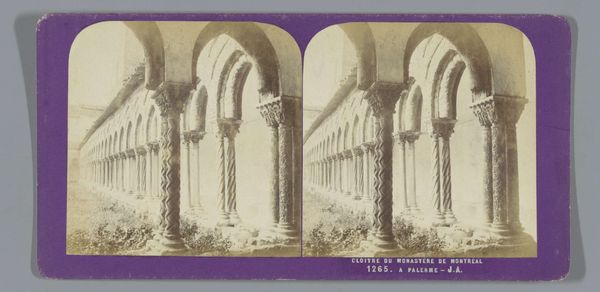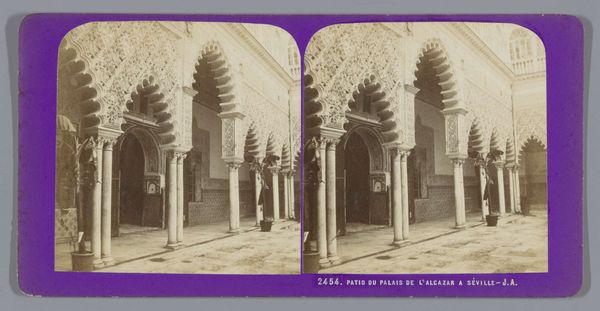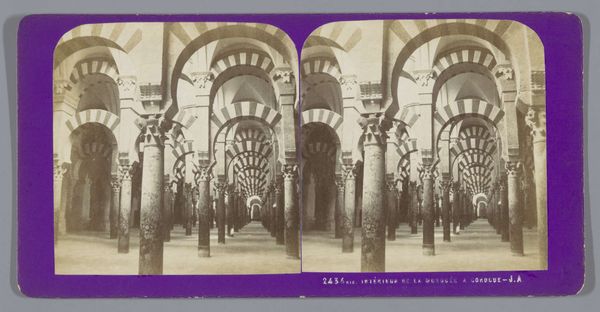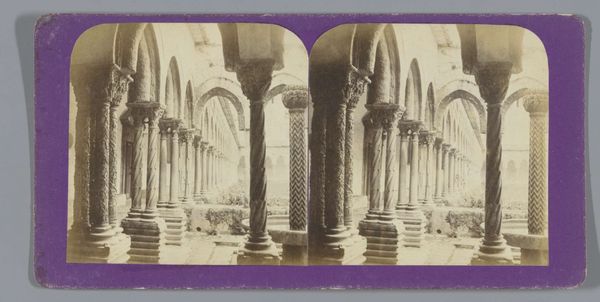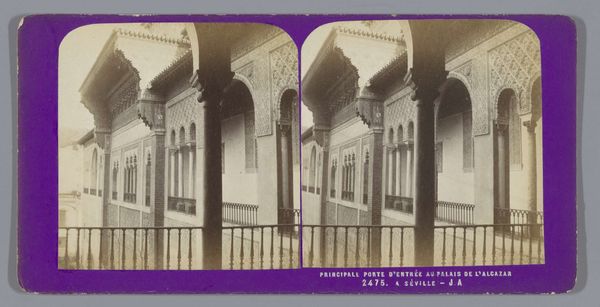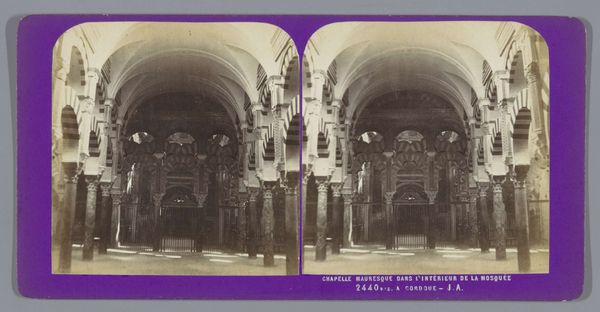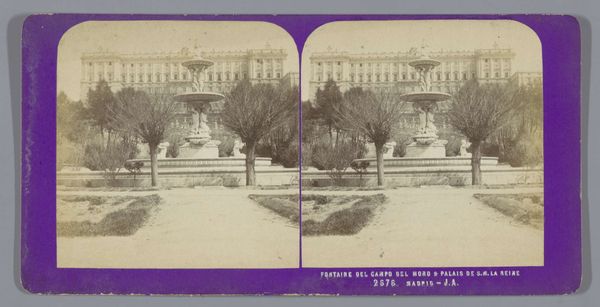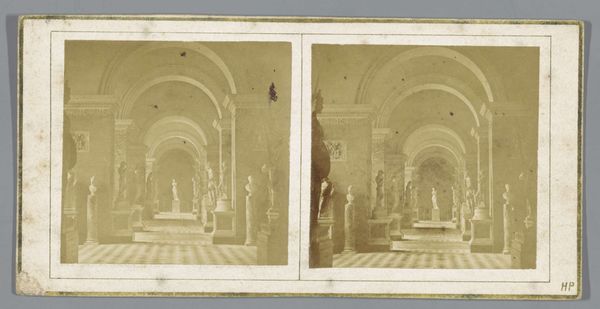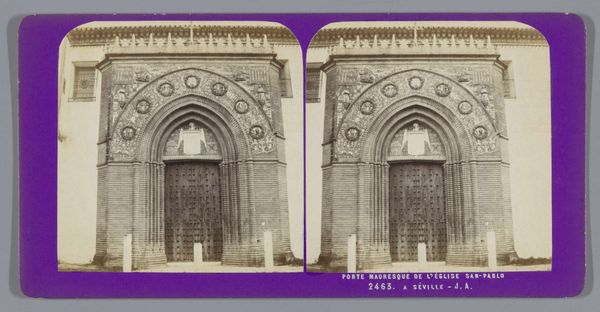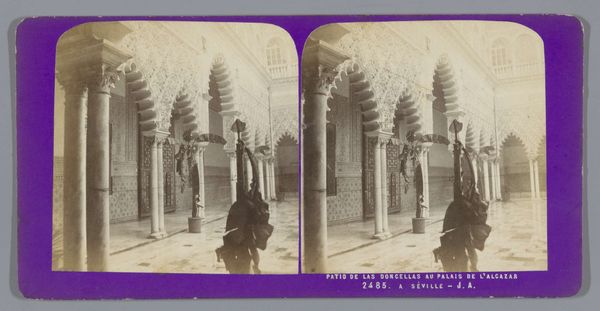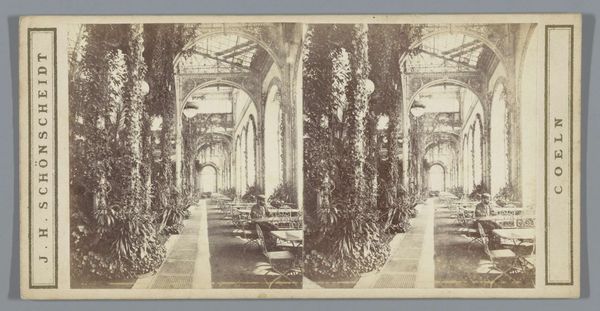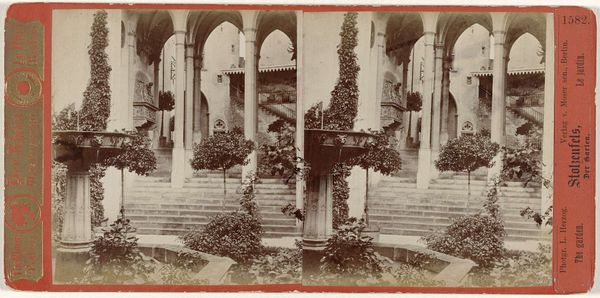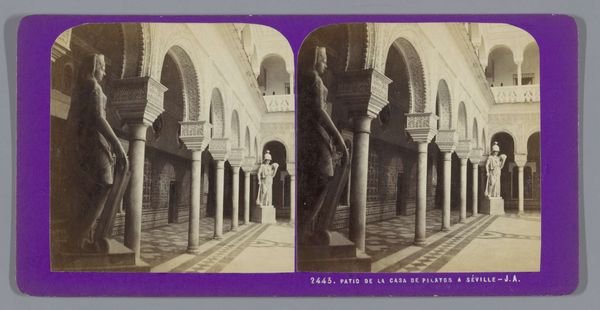
photography, gelatin-silver-print
#
landscape
#
perspective
#
photography
#
coloured pencil
#
ancient-mediterranean
#
orientalism
#
gelatin-silver-print
#
watercolour illustration
Dimensions: height 85 mm, width 170 mm
Copyright: Rijks Museum: Open Domain
Editor: We’re looking at Jean Andrieu’s "Gezicht op de Patio de las Doncellas in het Alcazar in Sevilla," a gelatin-silver print from between 1862 and 1876. It's quite striking. The symmetry and detail create a very still, almost dreamlike quality. What’s your perspective on this work? Curator: This image resonates deeply with the orientalist gaze so prevalent during this period. It presents a highly curated view of Islamic Spain, framing it as exotic and timeless, while often ignoring the complexities of power and cultural exchange. Do you notice how the composition, with its emphasis on ornate details and serene emptiness, almost romanticizes a past era? Editor: I see what you mean about the "exotic" feel. But I am also interested in the technique. Curator: The photographic technique itself played a role in shaping perceptions. The use of gelatin-silver print allowed for sharp details, reinforcing the visual emphasis on the “otherness” of the architecture. However, doesn’t the photograph also subtly highlight the history of cross-cultural contact between Islam and the West? The Alcazar wasn't built in a vacuum, and reflecting on the history of its construction, is to highlight a more interesting story of power struggles that is far from "timeless" and "serene." Editor: That’s a fascinating point. It makes me wonder about the intended audience for this photograph. Curator: Precisely! Who was meant to consume this image, and what preconceived notions might they have brought to it? Think about the ways photography, during this period, served to reinforce colonial narratives. It wasn't just a passive record, but an active participant in shaping cultural understandings. Editor: I see this photo in a completely new light now. Curator: And hopefully you also view this narrative through the multiple complex points of intersection that led to the work being realized. We must remember art as an act of human expression firmly set within political power struggles, gender relations, and historical understanding.
Comments
No comments
Be the first to comment and join the conversation on the ultimate creative platform.
